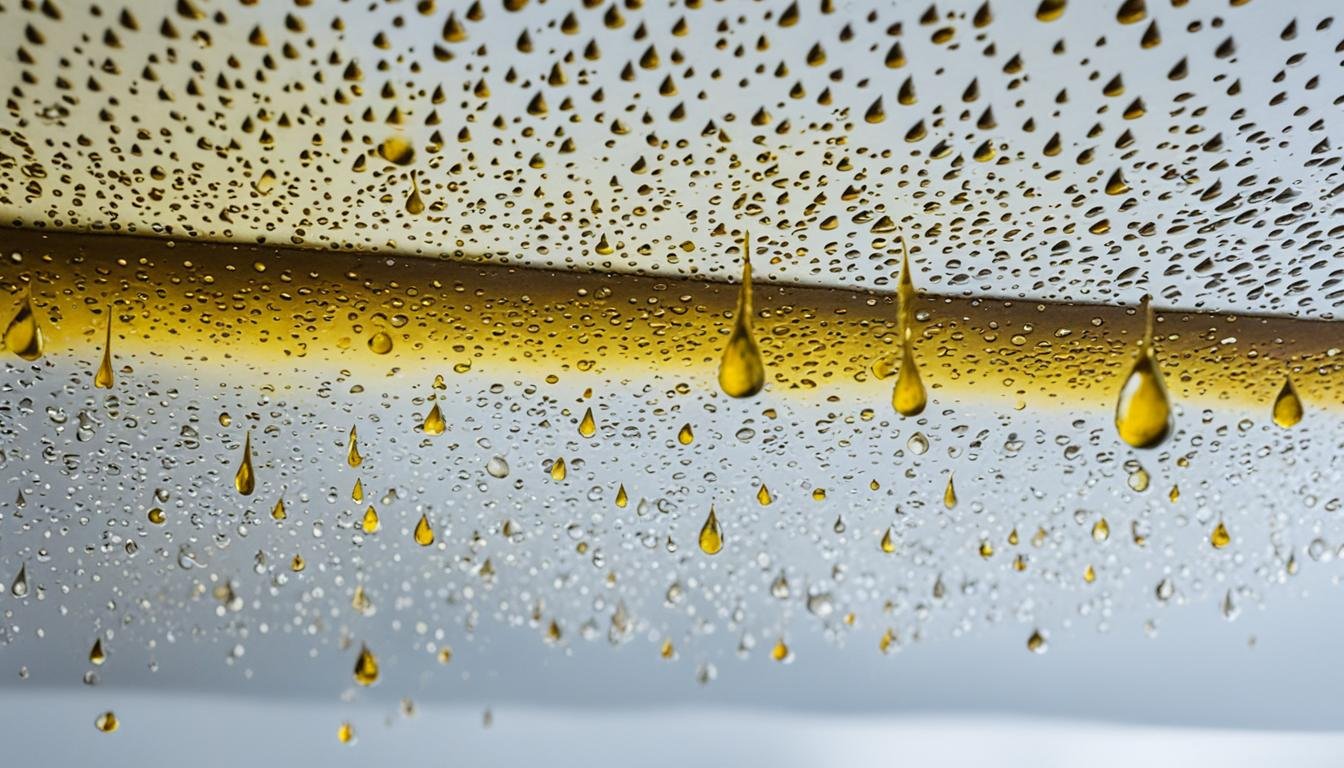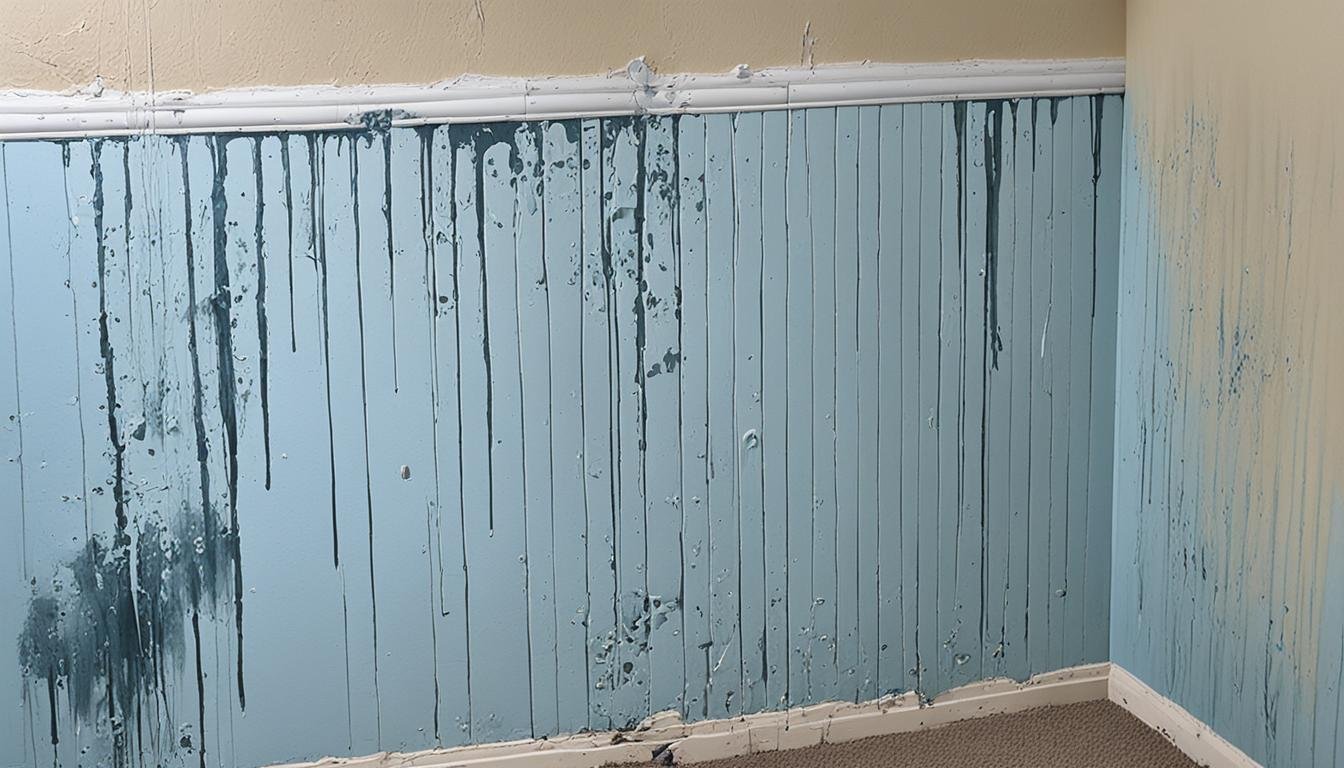Mold Risk from a Single Water Leak
Did you know a water leak at home can cause mold in just 24-48 hours? This is why it’s crucial to act fast when water damage happens. Mold loves wet spaces and grows quickly if the area isn’t dried out fast. Key Takeaways Mold can begin growing within 24-48 hours of a water leak or incident. Prompt action is crucial to prevent long-term damage and health risks. Professional water damage restoration experts can effectively detect and remediate mold caused by leaks. Controlling moisture levels and addressing the root cause of mold growth is essential for prevention. Homeowners should monitor affected areas for potential mold growth even after cleaning up water damage. Understanding Mold Growth After a Water Incident Mold growth is a serious issue after water damage, spreading fast if not stopped early. It only takes 24-48 hours for mold to start growing after water damage. Knowing what speeds up mold growth and when it becomes visible is key to reducing risks from water damage. Factors Influencing Mold Development Several factors can speed up how fast and how much mold grows after water damage: Temperature: Mold likes it warm and wet, between 77°F and 86°F is perfect for it. Moisture: It needs water to grow, from sources like standing water, high humidity, or condensation. Mold spores: These tiny spores are everywhere and land on wet surfaces to start new colonies. Timeframe for Visible Mold Mold isn’t always seen right away, but it can start growing on surfaces in a few hours if it’s damp enough. Within 24-48 hours, you might see mold as fuzzy patches or discoloration. Signs of mold growth also include a musty smell, peeling wall paint, or warped floors. Addressing water damage quickly is crucial, as mold can be a big problem if left untouched for over 48 hours. The team at Water Damage Pros – San Bernardino is experienced in water damage and mold problems. They help make homes and businesses safe and healthy again by cleaning up mold properly. “Mold only needs organic material, oxygen, and moisture to grow and spread. Over a trillion gallons of water leak every year in the United States, providing the perfect conditions for mold to thrive.” Mold Risk from a Single Water Leak Even a tiny water leak can lead to big mold problems. The team at Water Damage Pros – San Bernardino warns that a small leak can make a great spot for mold. Such leaks are often hard to spot, leading to hidden water damage. Mold starts growing on wet surfaces in a day or two. The leak’s warmth and moisture make it grow fast. Without quick fixing, mold can spread fast, making the air bad to breathe. This is especially harmful to kids and those with weak immune systems. Kids in homes with mold are five times more at risk of asthma. About a quarter of people have genes that make them get sick from mold. This can lead to breathing problems, a sore throat, and other illnesses. Finding and fixing leaks fast can stop mold and keep your home safe. Mold cleanup costs about $2,500 on average. But it may get much pricier for bigger places or harder cases. Make sure only experts check for mold. Water Damage Pros suggests GPMI in Southern California. They can test for mold and tell you how bad the problem is safely. “Mold can start to develop on surfaces within 24 to 48 hours of water exposure, and mold spores usually take around 18 to 21 days to colonize and become apparent.” Don’t wait till you see mold. Acting fast after a leak, with help from pros, can keep mold small and avoid health and money troubles. Conclusion A single water leak in your home can become a major mold risk if not handled right away. The crew at Water Damage Pros – San Bernardino underlines acting fast. Mold can start to grow within 24-48 hours after a water damage event. Working with a pro mold remediation team like Water Damage Pros can help. They’ll find and solve any mold problems. This means keeping your home and family safe. If you see or suspect a water leak, don’t wait. Call 951-903-5429 or go to sanbernardinowaterdamagerestoration.com. Doing this can help you avoid the risks of mold growth. Keeping moisture under control and spotting leaks quickly are key. These actions can stop the bad and expensive effects of mold. Make a move now to keep your place healthy and mold-free for you and your family. FAQ How quickly can mold start growing after a water incident? Mold can start growing within 24 to 48 hours after water spills. The speed depends on things like how hot or cold it is, the humidity, and if there are mold spores in the area. What are the risks of a single water leak in my home? Even a small water leak can cause big mold problems. If not fixed fast, it poses health risks. Often, you can’t see the hidden damage, which is perfect for mold to grow. How can I prevent long-term damage from mold growth? Finding leaks early, then drying and cleaning up, is key to stop mold. Water Damage Pros – San Bernardino suggest acting fast to prevent mold and keep your home safe. Source Links https://jenkinsrestorations.com/how-to-prevent-mold-after-water-damage/ https://www.alldryus.com/blog/mold/can-one-time-water-leak-cause-mold/ https://www.puroclean.com/pembroke-pines-fl-puroclean-pembroke-pines/blog/mold-from-water-leak-in-ceiling/ https://homestargroup.net/restoration-tips/what-does-water-damage-mold-look-like https://www.ncbi.nlm.nih.gov/books/NBK215647/ https://unitedwaterrestoration.com/blog/can-you-get-mold-from-water-damage/ https://www.gpinspect.com/article/what-to-do-water-damage-mold/ https://cfrsfl.com/blog/top-4-types-of-mold-to-look-out-for-after-water-damage/ https://greenorchardgroup.com/how-fast-does-mold-grow-after-a-water-leak/ https://greenworksllc.com/mold-after-water-damage/ https://restorationxperts.net/health-risks-of-mold-from-water-damage-explained/ https://moldcontrolpanama.com/how-to-prevent-mold-after-a-water-leak/




